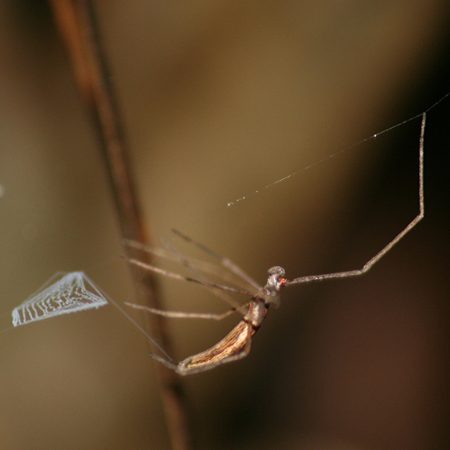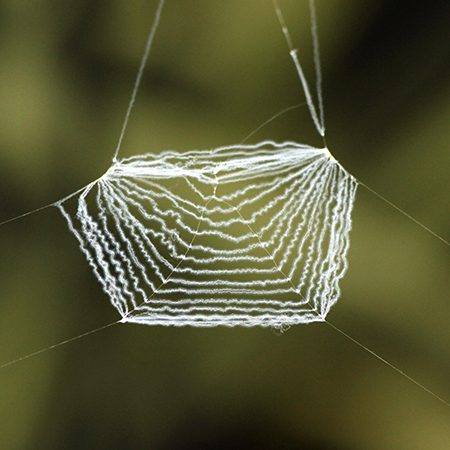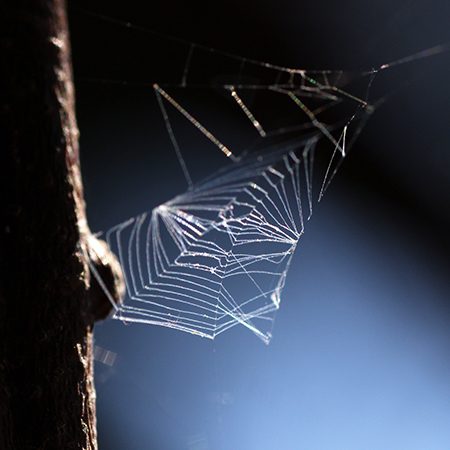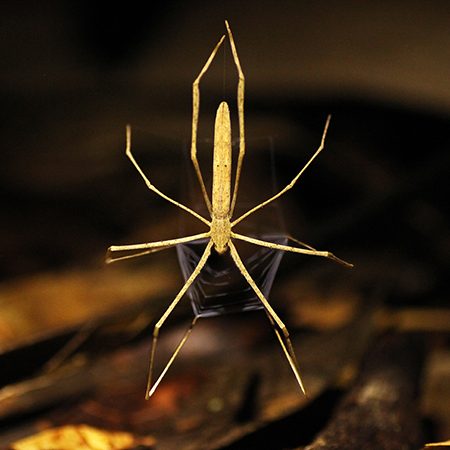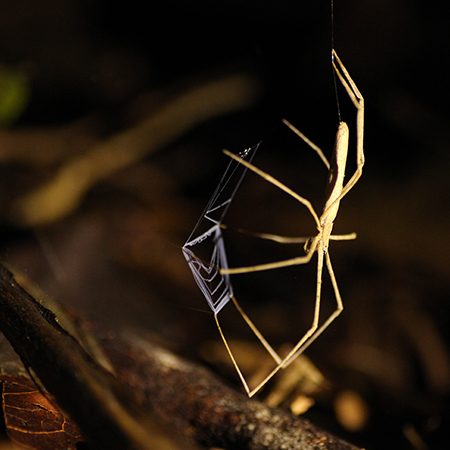Research: Arachnid sensory ecology
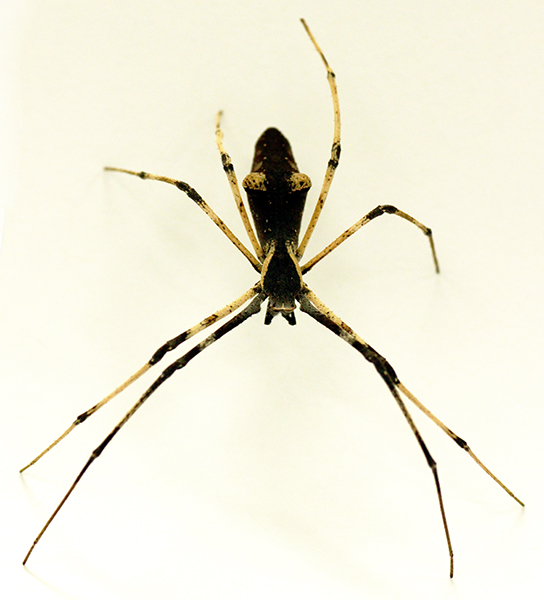
What is sensory ecology…and why spiders?
A sensory ecologist typically seeks to understand the form and/or function of sensory systems. For example, maybe you’re interested in how a certain sensory system helps an animal survive. Or perhaps you’re intrigued in why closely related animals may possess vastly different sensory organs. The above research interests fall under the umbrella of “sensory ecology” and would lend insight to how a given sensory system might evolve over time – which is a primary objective of mine. We also might learn novel methods of sensory capture and processing from animals that have evolved unique sensory systems for 300+ million years, especially from animals with highly specialized sensory structures – like those found in net-casting spiders. As such, this type of research also has great potential for applications in enhanced biosensor design and processing.

What is sensory ecology…and why spiders?
A sensory ecologist typically seeks to understand the form and/or function of sensory systems. For example, maybe you’re interested in how a certain sensory system helps an animal survive. Or perhaps you’re intrigued in why closely related animals may possess vastly different sensory organs. The above research interests fall under the umbrella of “sensory ecology” and would lend insight to how a given sensory system might evolve over time – which is a primary objective of mine. We also might learn novel methods of sensory capture and processing from animals that have evolved unique sensory systems for 300+ million years, especially from animals with highly specialized sensory structures – like those found in net-casting spiders. As such, this type of research also has great potential for applications in enhanced biosensor design and processing.
Current research: Sensory ecology and behavior of net-casting spiders
Current research: Sensory ecology and behavior of net-casting spiders
Foraging behavior
Spiders from the family Deinopidae use a unique form of nocturnal foraging called “net-casting.” The spider positions itself upside down, hangs in the middle of a non-sticky web frame, and grasps a “capture snare” using its outstretched front legs. When prey items are detected, the spider lunges at, and actively entangles, the prey using the capture snare.
Interestingly, these spiders can capture prey both from off the ground and from out of the air, which isn’t super common among spiders (most will specialize on one or the other). As these spiders are highly effective at capturing fast-moving prey under low light conditions, most of my work focuses on deciphering what sensory systems are used to allow for such a behavior. For obvious reasons, vision was where I have focused most of my effort. The compilation of foraging on the right was taken under infrared light during my first field season in Florida.
Foraging behavior
Spiders from the family Deinopidae use a unique form of nocturnal foraging called “net-casting.” The spider positions itself upside down, hangs in the middle of a non-sticky web frame, and grasps a “capture snare” using its outstretched front legs. When prey items are detected, the spider lunges at, and actively entangles, the prey using the capture snare.
Interestingly, these spiders can capture prey both from off the ground and from out of the air, which isn’t super common among spiders (most will specialize on one or the other). As these spiders are highly effective at capturing fast-moving prey under low light conditions, most of my work focuses on deciphering what sensory systems are used to allow for such a behavior. For obvious reasons, vision was where I have focused most of my effort. The compilation of foraging on the right was taken under infrared light during my first field season in Florida.
Net-casters making and holding their capture snares
Net-casters making and holding their capture snares
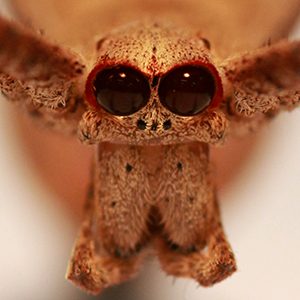
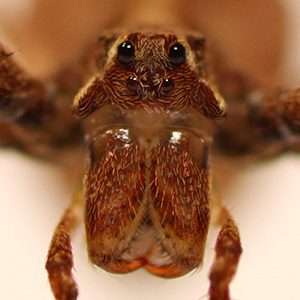


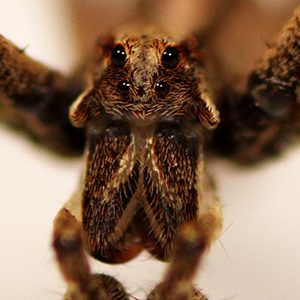


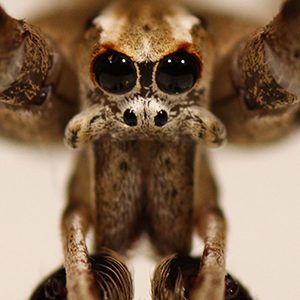


Vision
In addition to this unusual hunting strategy, net-casting spiders also possess extreme variation in visual morphology, depicted in the pictures to the left. There currently are two main described groups (genera) of net-casters, one group with massive eyes (Deinopis in the squares) and one group with eyes of reduced size (Menneus in the circles). Deinopis eyes are the largest of any spider and are incredibly sensitive to light, which I’ve shown helps them catch prey from off of the ground at night. Very little is known of Menneus vision and understanding why these closely related spiders have such drastic differences in visual systems is a major interest of mine.
Even within species, there exists a surprising amount of variation in eye size. Female net-casters (two on the left) continue hunting throughout their entire life, while males (two on the right) cease foraging upon maturation. In some species, the enlarged eyes of the males shrink up to 25% during their final molt. This dramatic shift in behavior and sensory investment is pretty interesting to me and I plan to continue investigating the topic within multiple species.
Vision
In addition to this unusual hunting strategy, net-casting spiders also possess extreme variation in visual morphology, depicted in the pictures to the left. There currently are two main described groups (genera) of net-casters, one group with massive eyes (Deinopis in the squares) and one group with eyes of reduced size (Menneus in the circles). Deinopis eyes are the largest of any spider and are incredibly sensitive to light, which I’ve shown helps them catch prey from off of the ground at night. Very little is known of Menneus vision and understanding why these closely related spiders have such drastic differences in visual systems is a major interest of mine.












Even within species, there exists a surprising amount of variation in eye size. Female net-casters (two on the left) continue hunting throughout their entire life, while males (two on the right) cease foraging upon maturation. In some species, the enlarged eyes of the males shrink up to 25% during their final molt. This dramatic shift in behavior and sensory investment is pretty interesting to me and I plan to continue investigating the topic within multiple species.
Hearing
I’ll discuss this after we
publish some things first…
Hearing
I’ll discuss this after we
publish some things first…
Past research: Sexual signalling and mate choice in wolf spiders
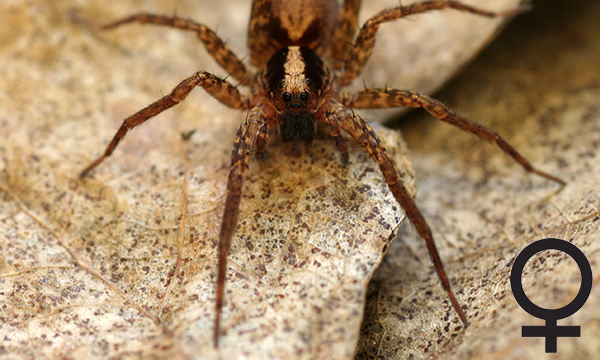


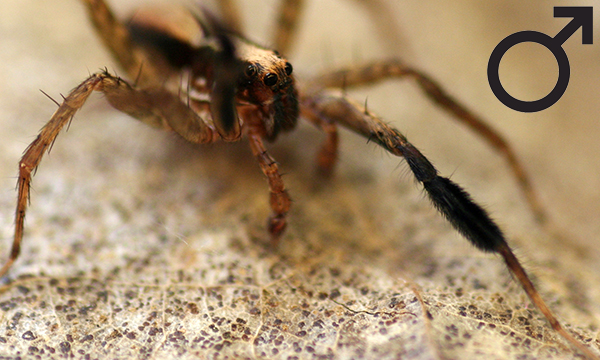


Schizocosa wolf spiders
Upon sexual maturation, males of multiple Schizocosa wolf spider species develop a conspicuous pattern of pigmentation and/or brushes on legs used in courtship displays. In conjunction with visual courtship displays, all Schizocosa species employ a species-specific seismic signal. The seismic signal is known to be crucial for mating success, yet visual ornamentation alone appears unimportant in the mate choice decisions of many previously studied species. During my time as a lab tech, I showed that the visual component of the male S. crassipes courtship display is equally important as the seismic signal. These males have brushes on their front legs, and we showed that mating success decreases when females cannot see and judge their ornaments.






Schizocosa wolf spiders
Upon sexual maturation, males of multiple Schizocosa wolf spider species develop a conspicuous pattern of pigmentation and/or brushes on legs used in courtship displays. In conjunction with visual courtship displays, all Schizocosa species employ a species-specific seismic signal. The seismic signal is known to be crucial for mating success, yet visual ornamentation alone appears unimportant in the mate choice decisions of many previously studied species. During my time as a lab tech, I showed that the visual component of the male S. crassipes courtship display is equally important as the seismic signal. These males have brushes on their front legs, and we showed that mating success decreases when females cannot see and judge their ornaments.
Past research: Homing behavior in amblypygids
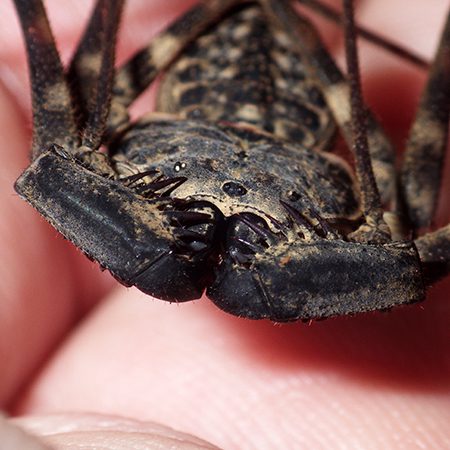


Multimodal navigation
Amblypygids, commonly referred to as whip spiders, have some serious sensory equipment of their own. They have evolved a pair of antennae from what once were walking legs hundreds of millions of years ago. During the Arachnology course at La Selva, I helped out with a field study testing the importance of different sensory systems in homing behavior (i.e. displacing individuals and observing rates of return to their territories). It seems like both olfaction and vision are used in this behavior.






Multimodal navigation
Amblypygids, commonly referred to as whip spiders, have some serious sensory equipment of their own. They have evolved a pair of antennae from what once were walking legs hundreds of millions of years ago. During the Arachnology course at La Selva, I helped out with a field study testing the importance of different sensory systems in homing behavior (i.e. displacing individuals and observing rates of return to their territories). It seems like both olfaction and vision are used in this behavior.



Jay A. Stafstrom, Ph.D.
Postdoctoral researcher
Neurobiology and Behavior
Hoy Lab – Cornell University
JS2627 “at” cornell.edu
JayStafstrom.com © 2019, All rights reserved.
